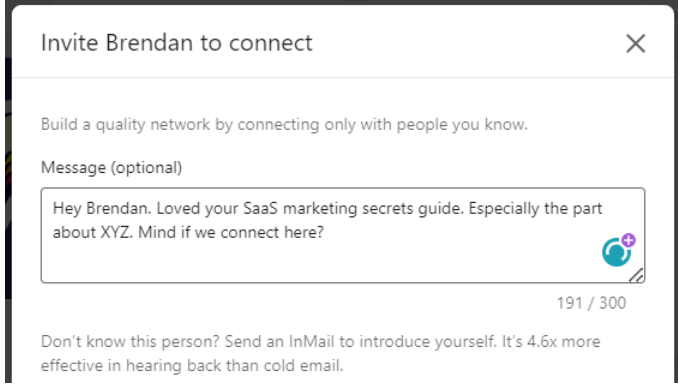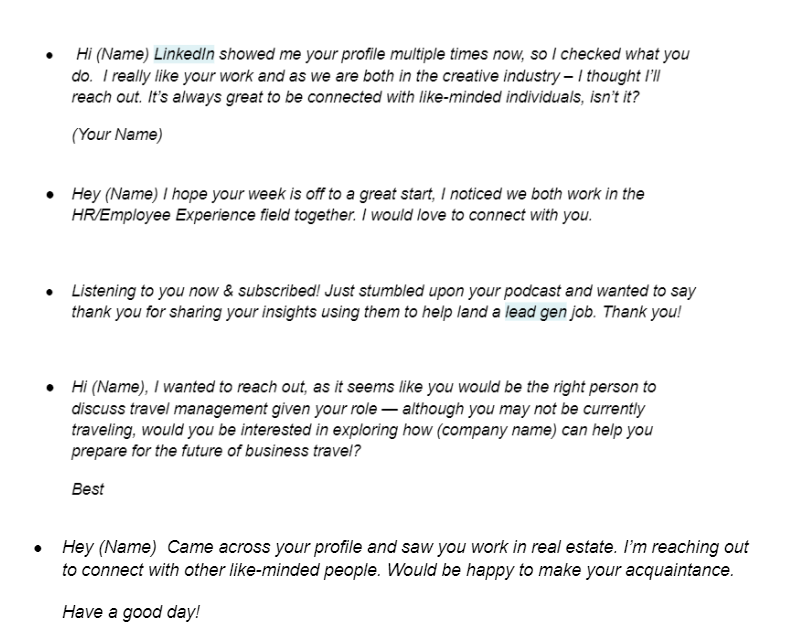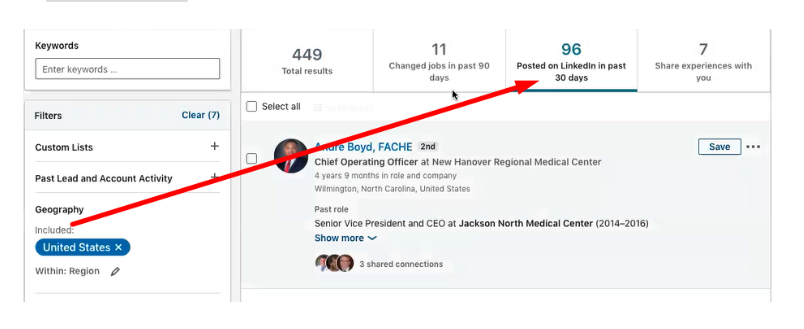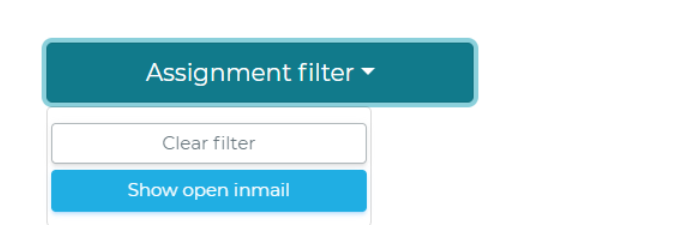Even if you’re already a pro at outbound marketing, you need to keep asking yourself:
- What outbound lead generation strategies are working best right now?
- How much should I invest in inbound marketing?
- And what lead generation strategy should my team follow to exceed our sales goals?
SalesBread has 12 years of experience in the prospecting game, and have tried and tested various strategies.
The strategies we will outline below allow us to generate 20+ qualified sales leads per month for our clients.
These are some of the most effective outbound sales strategies today that all salespeople should use.
But first, some background for beginners. (Experts, feel free to skip down to the 5 strategies below.)
What is outbound lead generation?
Did you know that there are 6030 Million results for this exact question on Google?
A lot, right?
Meaning that there are many people out there who are still Googling this exact question, and there are also millions of websites offering the same answer.
But the simple answer to this question is that outbound lead generation basically takes a person’s “business” or “brand” to new customers by:
- Cold calling
- Cold emails
- Social selling on Linkedin.
- Organizing events to create brand awareness
- Flyers
- Billboards
(Usually, sales reps will do this for companies, you could either have your own in-house marketing team or outsource a company like SalesBread to handle the nitty gritties for you).
Does outbound lead generation still work in 2021? Yes, it definitely does. You just need the right strategy.
Have a look at some of this year’s stats:
- 79% of B2B marketers think email is most effective for demand generation.
- Email drives higher ROIs than any other lead generation tool. For every dollar you spend on email marketing, you can expect to earn $42 back. That’s 4400% ROI, higher than any other lead generation tool. (Source: Campaign Monitor)
- Companies that nurture leads generate 50% more sales at 33% lower costs. Another study from Marketo found that businesses that nurture leads enjoy 50% more sales. They also found that those sales cost an average of 33% less than non-nurtured prospects. (Source: Marketo
- Emails for lead nurturing have higher CTRs. A study from Hubspot found that emails sent out for lead nurturing purposes had an average click-through rate of 8%, significantly higher than regular emails, which had an average CTR of 3%. (Source:Hubspot)
Inbound vs. outbound? Which is better?
Inbound marketing is quite different from outbound marketing in the sense that it attracts customers to your brand or business through tailored and engaging marketing campaigns.
You would need to attract potential customers by posting valuable content through social media, your website, SEO, blogging, videos, and ads.
Then you would need to engage with them through mail marketing, or a social media page.
Inbound lead generation marketing tactics include:
- Blogging
- Social media pages
- Web landing pages
- Blogs
- Videos
- Search engine optimization
- Content marketing
Inbound marketing also works well, but remember that it does take time.
On average, it could take between 6 and 9 months before your website appears on the first page of Google. (In some cases, it might even take longer.)
For a more in-depth read about inbound vs. outbound, click here.
This is why…
It is always a good idea to invest in both inbound and outbound marketing methods to get your business’s name out there.
An inbound strategy will build up your company name with time, whereas outbound tactics can get your business’s name out there immediately.
What are the best channels to use when it comes to outbound lead generation?
We have found these three channels to be the best when it comes to outbound marketing strategies:
- Cold Emails
- Linkedin Messaging
- Linkedin Inmails
Why?
Well, the main reason is that we have had really high metrics when it comes to using these three channels.
These channels have allowed us to generate at least one lead a day for our clients.
Have a look at some of our more conservative stats:
Cold email = 9% positive reply rate
Linkedin = 19% positive reply rate
Open inmail = 6 % positive reply rate
*Positive reply rate is the number of positive replies / the total number of prospects contacted. (It ignores negative or neutral replies to get the actual conversion rate.)
Stat breakdown:
- With cold email, we are seeing a 9% positive reply rate. (If you send 100 emails, that’s about 9 leads.)
- Linkedin messaging comes in with the highest positive reply rate at 19%
- Open Inmail messages come in last at a 6% positive reply rate.
All of these combined lead us to 1 lead a day.
Once again, these are really conservative metrics, but we are seeing some campaigns receiving 50% or more positive reply rates, just for Linkedin alone.
Some cold email campaigns are getting a 30% response rate and 22% response rates for InMail.
It’s important that when you design your outbound strategy, you need to be conservative with your figures so that you know exactly what needs to happen on a day-by-day basis.
Have a look at some of these stats:
- 79% of B2B marketers think email is most effective for demand generation.
- Email drives higher ROIs than any other lead generation tool. For every dollar you spend on email marketing, you can expect to earn $42 back. That’s 4400% ROI, higher than any other lead generation tool. (Source: Campaign Monitor)
- Companies that nurture leads generate 50% more sales at 33% lower costs. Another study from Marketo found that businesses that nurture leads enjoy 50% more sales. They also found that those sales cost an average of 33% less than non-nurtured prospects. (Source: Marketo)
- Emails for lead nurturing have higher CTRs. A study from Hubspot found that emails sent out for lead nurturing purposes had an average click-through rate of 8%, significantly higher than regular emails, which had an average CTR of 3%. (Source: Hubspot)
Before you begin, build a list of ideal customers.
Before you begin any strategy, always build a list of your ideal customers first. This will ensure that you have the correct target audience. So how would you do this?
Have a look at which types of companies or people have been buying from you within the past 6 months. Look out for any patterns. You can ask yourself some of these questions:
- What similarities do these customers have?
- What is your ideal customer profile?
- What kind of buyers are these?
- Are they all located in a similar area?
- Are they all in a specific industry?
Once you have found a pattern, you will know which people will most likely buy your product. You will then need to begin researching and list building. This takes time, BUT it is essential.
We use the following prospecting tools to help our sales team create lists:
Linkedin Sales Navigator
This tool offers various features (depending on the package you choose) such as:
- Advanced lead and company search
- Alerts on your saved leads and accounts
- Customized lists
- Content sharing and engagement tracking
- CRM synchronization
- Inmail
- Access to Linkedin subscriptions
The Core package costs $79.99 per month whereas the Advanced Plus package could cost quite a bit more.
This sales prospecting tool is great for marketers looking for prospects that work for a specific company; if you have a list of companies, you will be able to find people who work in those particular companies and target them.
You can also get really granular about how you target prospects, from their job title, geography to their seniority in a business. You can and even use specific keywords to search for a prospect.
Apollo.io
Appolo.io is a powerful tool for b2b sales prospecting. We use this specific tool for data mining. It allows us to find the email addresses and phone numbers of contacts on Linkedin.
Apollo.io is basically a tool that has scraped all the info off Linkedin, so when it comes to finding info about companies, for example, it allows you to essentially do a Linkedin search, but far more effectively.
Apollo does offer a free package, with the professional package costing $79 a month.
Expandi.io
This is an automation tool you use once you take all the accounts you have found on Apollo, Crunchbase, or ZoomInfo.
You can then pull and plugin the data into the Sales Navigator search.
You will then grab that search URL, and Expandi will scrape those prospects for you and add them to a connector campaign automatically. (Just make sure the first names and company names are written perfectly before you start messaging.)
You will need to pay $99 per seat, but it might be a small cost to pay if it is one of the safest automation tools to use out there.
Our 5 outbound lead generation strategies:
1. Linkedin Strategy
Let’s start with LinkedIn sales strategies.
IMPORTANT: LinkedIn outreach only works for prospects that use LinkedIn.
Obvious.
But how can you ID the people that actually use it? Simple, use 2nd degree connections… and 3rd degree prospects that posted recently!
That’s the easiest way to filter out the people that don’t use it!
(Ignore everyone else for LinkedIn as you’ll have some pretty crappy invite acceptance rates 🙂
Here’s how to do this:
Send personalized invite messages to your 2nd-degree network
This is our first strategy in short:
The first thing you should do is send personalized invite messages to prospects in your 2nd-degree network on Linkedin.
Then follow-up when they connect 3 times. Make sure you include a custom intro sentence for message 1 to stand out from the bots. (This is how we get a 19% positive reply rate on average.)
Read below for an in-depth step by step look at how we do it:
Before you send out your personalized messages, it’s important to find the Linkedin ID’s for each target company. This is a time-consuming process, but it is an essential step to translate the accounts you want to go after and turn that into a sales navigator URL.
This is how you do it:
Go to the company page on LinkedIn and click on “See all X employees on LinkedIn. “ The company ID is in the URL after the “?facetCurrentCompany=%5B” parameter.”
See below:

So once you have all the company IDs, you will need to add them to the Sales Navigator’s Linkedin search URL.
This will then allow you to pull up a list of accounts.

Filter by your second-degree network
The next step will be to filter by your second-degree network on Linkedin initially and then expanding to your third degree.
In the past we recommended only sending 25 connection requests per day, but if you’re good at what you do, then you could send about 150 connection requests per week.
This article 13 Of The Best Linkedin Marketing Strategies explains how to do so.
Pro Tip:
You want to send connection requests to those who are already in your second-degree network, as you will already have mutual connections, therefore it will be easier to start up those conversations.
Also, only send messages to those who have posted on Linkedin within the last 30 days.
This will ensure that you’re not wasting time sending messages to people who never use the platform.
If you do this, you will be able to get a strong connection, which will bring in good reply rates.
Write your Linkedin Connection request message

Write your Linkedin connection request message, but add in a lot of personalization.
As with the emails, research the prospect before writing your connection request message. This personalization allows for a “pattern interrupt,” which will make the prospect stop and see your message differently.
Why?
Well, because it mentions something personal about them. This puts your message apart from the hundreds of spam messages they receive daily, which have probably been generated by an automation tool.
Here are some examples of connection request messages that have been personalized:

Follow-up
Once the prospect responds, follow up with them immediately. We suggest following up 3 times. In your follow-up message, do not pitch your sale. This will once again put your prospect off a conversation with you.
Instead, use the 90/10 rule, which is “talk about the prospect 90% of the time and only 10% about yourself for context.”
Ask for a call or a meeting in your follow-up message.
Connect with 3rd-degree prospects that have recently posted on LinkedIn.
Once you have filtered into your second-degree network, you can then filter down to your third-degree network. You would follow the same process as you would have with your second-degree network.
But remember only to target those who have recently posted something on Linkedin within the past 30 days.
Make sure that this is in the URL: &spotlightGroup=RECENTLY_POSTED_ON_LINKEDIN to find people that have posted on Linkedin within the last 30 days.
This ensures that the people you are targeting are actually using the platform. Therefore you won’t waste time sending messages to people who aren’t active on Linkedin.
See screenshot:

As with the above steps, when they connect with you, follow up 3 times. Make sure you include a custom intro sentence for the message to stand out from the bots.
2. InMail Strategy
Send inmail messages to prospects with an open profile
It turns out that the best way to get a reply is to treat these Inmails exactly as you would a connection request message.
If you stick to this strategy, you can expect a 9% reply rate, just on Inmails alone.
(Remember this is a very conservative number, as we are seeing some Inmails getting a reply rate of 22.3%)
We use Expandi to perform the exact same searches.
We then export the prospects that we find in second and third-degree and groups.
This will be a much larger list, but we are only looking for prospects with open inmail accounts.
The screenshot below is from Expandi.io and shows how you can filter to only show open inmail accounts:

Note: 15-25% of prospects, on average, have an open inmail profile, so you definitely want to target this group. This is also our way of easily getting around Linkedin’s invite limitations because you can send as many open inmail messages as you like, a day, for free.
Inmail pro tips:
1. Choose the right prospects by obsessive list building
Before you send out your InMail, make sure that you are targeting the right people. There is no point in sending a message about divorce lawyers to a wedding planner start-up on Linkedin.
So do your research, build your lists accurately before sending out your messages.
2 Personalize your InMails correctly
Once again, this is where research comes into play. Look for commonalities, mutual connections, and anything that could tell you a bit more about the prospect so that you can gain common ground.
Do they have a social media page, or have they been on a podcast? If you can find something about them that you can compliment them on, you are bound to get higher reply rates.
This also shows the prospect that you are not some automation tool but rather a Linkedin user who has taken the time to send them something thoughtful.
3. Write a curiosity grabbing subject line
When something piques our curiosity, we want to see what it’s about. You could add a business topic in the subject line or something with a personal touch that might get the prospect to open your InMail.
4. Start a conversation
You can use InMail to start a conversation with a prospective prospect. Remember InMail allows you to get your foot in the door to ask for a meeting or phone call later on.
5. Don’t write a long message
People don’t have time to read essay messages. Keep it short and to the point, if you can, less than 150 words.
6. Use a low-commitment CTA
Do not sell your pitch in the InMail, but instead, use it to ask for a quick meeting.
Like: “Are you free for a 15-minute call on Thursday at 10 AM?”
3. Email Strategy
Send cold email to prospects that are not active on LinkedIn (they are not 2nd degree or posted in the last 30 days)
When it comes to cold email, the first thing you will need to do is get the email addresses of your ideal prospects. (You can use the prospecting tools as mentioned earlier to do so.)
The next step will be to start conversations with your prospects. DO NOT GO FOR THE SALE from the start. If you jump right into your sales pitch, you will put your prospects off any further communication.
So the trick is to grab their interest with a 1-word subject line and customized intro sentence. That’s how we use personalization to help get a 9% positive reply rate.
By utilizing a 1-word subject line, your email will look less salesy (and less like all the other cold emails that get like “quick question?”), and you’ll likely see higher open rates than just using something you found on goodsalesemails.com
Want to know more about our cold email personalization process?
(Have a look at this video for more information about personalization for cold email outreach
On a side note: What is personalization?
Well, it’s something that is specifically written for that exact prospect.
For example, if you found something on Google about the prospect, like if they partook in a charity run for the environment, then you could mention that in the email.
Or perhaps they were a host on a recent podcast. If they were, mention that in your email.
Be short and to the point, as people don’t have the time to read long emails. In fact, the shorter the email, the better.
End your email with a clear call to action.
Always end the email with a CTA (call to action).
The CTA’s below ask for a commitment from the prospect’s part, which means that they would be more likely to respond.
If a CTA doesn’t have a commitment, then the prospect might just ignore the mail.
Here are some examples of high commitment CTA’s:

Send follow-up emails to prospects that have accepted your invite but did not reply to your Linkedin follow-up messages.
The last step is to send emails to prospects who have not replied to your Linkedin follow-up messages.
You would use similar personalization in these follow-up emails to improve your deliverability rates and reply rates without the extra work.
To Recap:
The main points to remember when it comes to any outbound lead generation efforts are the following strategies:
- Send personalized invites to your second-degree network
- Connect with your third-degree network that has recently posted on Linkedin
- Send inmail messages to prospects with an open inmail account
- Send cold emails to prospects who are not active on Linkedin
- Send follow-up emails to those who accepted your invite but didn’t reply on Linkedin.
If you think this sounds like a lot of work, it is, but it really does pay off.
We have one lead a day to prove it. Curious how SalesBread can do the same for your business?
Book a free 15 minute strategy call below.